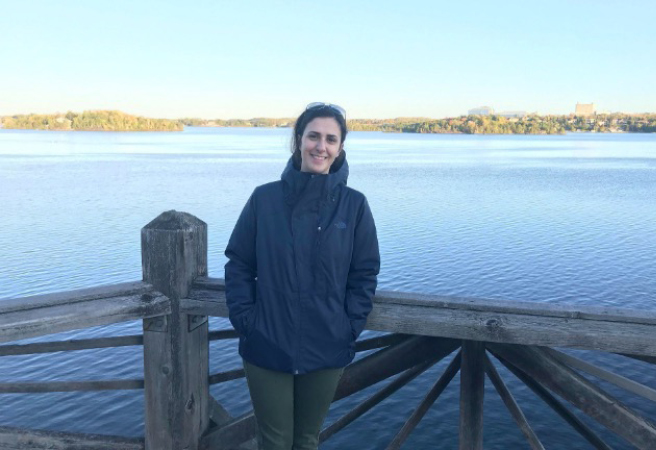NOSM grad stays North to practise as a clinical medical physicist
Posted on March 30, 2022
Dr. Lalageh Mirzakhanian is one of NOSM’s many notable women in science, and she’s making an impact in the field of medical physics. The NOSM alumna and newly-minted medical physicist says she joined NOSM’s Medical Physics Residency Education Program (MPREP) in 2019 to gain clinical experience and to have access to a future clinical medical physicist position. After graduation, Dr. Mirzakhanian quickly secured a position at Health Sciences North (HSN) in Sudbury, where she completed her residency.
“I always wanted to become a scientist,” she says. “I began with an undergraduate degree in physics, followed by a master’s degree in nuclear physics. During my master’s research project, I came across a paper written by a group of researchers in medical physics at McGill University. I became interested in medical physics and decided to pursue the field.”
After completing her masters and later her PhD at McGill, she applied to MPREP at NOSM—a two-year joint program in partnership with HSN and Thunder Bay Regional Health Sciences Centre (TBRHSC). The program recently received its second, five-year accreditation from the Commission on Accreditation of Medical Physics Education Programs (CAMPEP).
“The strength of this NOSM program is that it offers education in the clinical application of medical physics with a particular focus on radiation oncology. Learners apply physics to the processes of radiation treatment, they help develop individualized patient radiation treatment plans, they contribute to the computation of radiation doses, they verify the accuracy of radiation treatments, as well as participate in quality assurance, radiation safety, equipment operation, and regulatory compliance. They gain a wealth and breadth of applicable skills,” says Dr. Michael Oliver, MPREP Associate Program Director, Medical Physicist at HSN, and Dr. Mirzakhanian’s supervisor during her residency.
Dr. Mirzakhanian says it was a welcoming experience and she was able to continue her research.
“I enjoyed these two years of residency at NOSM,” says Dr. Mirzakhanian. “It is a healthy environment with friendly and knowledgeable faculty. I had multiple clinical rotations and all of my colleagues supported me during the residency. I also had the opportunity to visit another cancer centre in Ontario where I learned about different specialized techniques in radiotherapy and had the flexibility to work on a clinical research project. Meanwhile, I was able to stay connected to the close-knit NOSM group of residents and faculty via teleconference.
During the end of her residency, an opportunity opened up at HSN and Dr. Mirzakhanian landed the role. “As a medical physicist, I am providing clinical expertise, quality assurance, and calibration of equipment. The most interesting part is having more responsibilities and more interactions with the team members including physicists, physics assistants, electronic technicians, oncologists, and radiation therapists.”
Dr. Mirzakhanian says she’s tackling some pressing patient challenges by providing consultations to team members who require time sensitive solutions. “I’m applying my knowledge of physics to immediately impact patient safety and quality treatments. Becoming a medical physicist in Canada is a long journey, it requires many nights of study to complete the undergraduate, masters, PhD, residency, and final certification exam, however it is a rewarding career and worth all the efforts in the end.”
She encourages students with a physics background to explore medical physics, particularly if they’re interested in using and applying their knowledge in health care.
“After graduation, you will have three options for practice: in clinic, industry, or academia. If you choose to work as a clinical medical physicist, the MPREP is a great way to prepare for and gain clinical experience. It’s a smooth transition to becoming a qualified medical physicist.”


